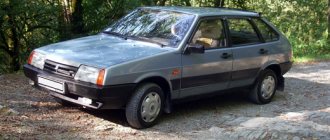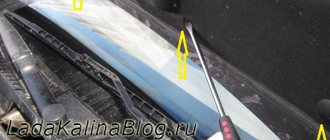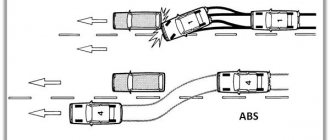The Volzhsky Automobile Plant was created in the 60s of the last century. This production was simply necessary at that time. With its construction, the government sought to satisfy the need of Soviet citizens for a personal car. VAZ was initially planned as the largest production facility in the USSR engineering industry. Over the years of its operation, the legendary enterprise has known ups and downs. His cars are still found in large numbers on the roads of our country.
New VAZ models have also been developed. The history of the auto giant is eventful and interesting for every car enthusiast. Indeed, in terms of power, this production had no equal throughout the entire territory of the Soviet Union.
Creation of production
The history of the creation of the auto giant begins in the mid-60s of the last century. In 1966, it was decided to build a machine-building production facility in Tolyatti. AvtoVAZ was created very quickly.
Equipment taking part in technological cycles was produced at factories not only in the USSR and its friendly countries, but also at enterprises in Europe and the USA.
In August 1966, the country's leadership entered into an agreement with the Italian Fiat. This concern helped build a legendary production facility in Tolyatti. The Italians not only took an active part in the construction process, but also trained personnel in the technology of performing the technological cycle.
At this stage, a small incident is known. An error was made in the emblem invented by Soviet artists. When it was released, the Italians wrote the letter “R” in the word “Tolyatti” instead of the letter “I”. The marriage was quickly resolved.
A brief excursion into history
The Volzhsky Automobile Plant was founded in the summer of 1966. It was planned to build a huge enterprise in Tolyatti, which, in cooperation with the Italian concern FIAT, would provide the Soviet Union with completely new passenger cars. This is exactly what will happen later. VAZs created on the basis of various modifications of the FIAT 124 will forever go down in the history of the world automotive industry. And even later, the plant will begin to produce unique cars,
having no analogues.
During the Soviet years, more than half a million passenger cars rolled off AvtoVAZ assembly lines every year. Many models were exported to dozens or even hundreds of countries.
At first these were cars based on the “classics”, and then “Niva” and “Samara”.
With the collapse of the USSR, dark times came for the company.
The plant changed hands for a long time. And only in the second half of the 2000s the situation improved a little. Foreign investors came to the production and helped the legendary company survive.
Interesting Facts
The history of the creation of the VAZ would be incomplete if several interesting facts were not considered. During negotiations with representatives of the Italian Communist Party, the Soviet leadership developed a plan for the construction of a huge machine-building enterprise in the city of Stavropol. In 1964 it was renamed Tolyatti.
This decision was not made by chance. The name of the city in which the plant was built was given in honor of the Secretary General of the Communist Party of Italy P. Togliatti. He suffered a sudden death while his delegation was visiting the Artek pioneer camp. During this period, Soviet leaders discussed with their partners the details of the upcoming joint venture.
To honor the memory of the General Secretary, the city where the first was erected was named in his honor.
Beginning of work
Since 1970, the work of the famous VAZ began. The Volzhsky Automobile Plant was being built at an accelerated pace, so the first batch of Kopeeks was born very soon. This is the legendary VAZ-2101 model. It was produced in quantities of 6 pieces. This car was given the name "Zhiguli". During the first year of operation of the enterprise, 100 thousand machines were created, which were distributed among employees of Soviet enterprises as incentives for hard work.
The demand for Zhiguli was limited only by the production capabilities of VAZ. The history of development also speaks about the export direction of sales of the auto giant's products. Only for deliveries abroad the name “Zhiguli” was changed to Lada. The first name in French sounded like “gigalo”, that is, a man dancing for money.
Model development
After the start of production at AvtoVAZ in Togliatti, new models appeared. VAZ-2102 and VAZ-2103 entered the world market. These were modifications of the already beloved Kopeika.
From 1966 to 1991, production capacity was concentrated in 5 main plants. The first general director of AvtoVAZ, V.N. Polyakov (photo presented below) and the entire workforce of the plant adapted the first car model to the conditions of domestic roads.
“Kopeyka” was created based on the prototype of the Fiat 124 sedan. Only its designers increased the ground clearance to 175 mm and strengthened the suspension and brakes. “Troika” was considered a “luxury” model at that time. It was distinguished from “Kopeyka” by its design. “Troika” had 4 headlights, an improved appearance of the dashboard, as well as chrome elements.
What is the salary of the company's employees?
According to official data, in the first half of 2020, on average, plant workers officially received about 42,000 rubles. To some, such a figure may seem very modest. But we must take into account that at that time the average salary in Tolyatti was 35,200 rubles. And in the Samara region it fell a little short of reaching the mark of 39,500.
It is also important to understand that the average salary of AvtoVAZ employees, the total number of which exceeds 36,000 people, is growing steadily. For example, in 2014 the salary was 28,000 rubles.
Additionally, employee benefits are regularly indexed. It is clear that the income of the Volzhsky Automobile Plant is not yet comparable to the earnings of an employee of one of Renault’s European enterprises. But let's hope that the situation will change for the better in the near future.
"Classic" models
In the following years, several more “classic” VAZ models were developed. History marks them out as the most sold cars. These include VAZ-2104, 2105, 2106, 2107. But it was the “Six” that became the most popular. Over the 30 years of its mass production (since 1976), more than 4.3 million cars of this brand were sold.
“Four” and “Five” are known as economy class models. "Seven" became an improved version of the VAZ-2105. The designers developed a rectangular headlight shape that was fashionable at that time. The interior of each subsequent model was redesigned and modernized.
Improvements were also made in the engine area. All the “classic” models sold well. And now you can meet representatives of this generation of cars on our roads.
History of AvtoVAZ, years of production of VAZ models
“Lada is the key to Russian roads”
- this is exactly what the motto sounds like - this is the largest Russian company in the automotive industry. Also, this company is the largest manufacturer of passenger vehicles in Eastern Europe. Relatively recently, a controlling stake in this company passed into the hands of the Renault-Nissan alliance, which gave a new round of development to AvtoVAZ.
Today, the official name of the company is AvtoVAZ Open Joint Stock Company, but this was not always the case. In the period from 1966 to 1971, the company was called the Volzhsky Automobile Plant, and from 1971 until joining the Renault-Nissan alliance, it was called the Volzhsky Association for the Production of Passenger Cars "AvtoVAZ".
In addition to changing names, the history of AvtoVAZ is rich in many other interesting events. The most interesting of them were the releases and closures of car production. In this article, we will look at the production years of VAZ models that were developed and produced both by the company itself and in partnership with other automobile manufacturers.
Model range and years of production of each car
Over the years of its work under different names, AvtoVAZ managed to produce several dozen car models. Below you will find the production years of VAZ models that have ever rolled off the assembly line of this plant. 1. Zhiguli 2101
. These cars were produced from 1970 to 1988.
2. Zhiguli 2102
. These cars were produced from 1972 to 1985.
3. Zhiguli 2103
. These cars were produced from 1972 to 1984.
4. Lada/Lada 2104
. These cars were produced from 1984 to 2012.
5. Zhiguli/Lada 2015
. These cars were produced from 1980 to 2010.
6. Lada 2106
. These cars were produced from 1976 to 2004.
7. Lada/Lada 2107
. These cars were produced from 1982 to 2012.
8. Lada Sputnik/Samara I 2108
. These cars were produced from 1984 to 2003.
9. Lada Sputnik/Samara I 2109
. These cars were produced from 1987 to 2004.
10. Lada Sputnik/Samara I 21099
. These cars were produced from 1990 to 2004.
11. Lada 110
. These cars were produced from 1996 to 2007.
12. Lada 111
. These cars were produced from 1998 to 2009.
13. Lada 112
. These cars were produced from 1999 to 2008.
14. Lada Samara II 2113
. These cars were produced from 2005 to 2014.
15. Lada Samara II 2114
. These cars were produced from 2001 to 2014.
16. Lada Samara II 2115
. These cars were produced from 1997 to 2012.
17. Oka 1111
. These cars were produced from 1988 to 1994.
18. Lada Kalina I 1117
. These cars were produced from 2007 to 2013.
19. Lada Kalina I 1118
. These cars were produced from 2004 to 2012.
20. Lada Kalina I 1119
. These cars were produced from 2006 to 2013.
21. Lada Kalina I 11198
. These cars were produced from 2008 to 2013.
22. Lada EL Lada
. These cars have been produced since 2013.
23. Lada Kalina II 2194
. These cars have been produced since 2013.
24. Lada Kalina II 2192
. These cars are produced in 2013.
25. Lada Priora 2170
. The production years of VAZ Priora models begin in 2007.
26. Lada Priora 2171
. These cars have been produced since 2009.
27. Lada Priora 2172
. These cars have been produced since 2008.
28. Lada Priora 21728
. These cars have been produced since 2010.
29. Lada Priora 21708
. These cars have been produced since 2009.
30. Lada Nadezhda 2120
. These cars were produced from 1998 to 2007.
31. Lada/Lada Niva 2121
. These cars have been produced since 1977.
32. Lada/Lada Niva
2131. These cars have been produced since 1993.
33. Lada/Lada Niva II 2123
. These cars were produced from 1998 to 2002.
34. Chevrolet Niva
. These cars have been produced since 2002.
35. Lada Granta 2190
. These cars have been produced since 2011.
36. Lada Granta hatchback
. These cars have been produced since 2014.
37. Lada Largus
. These cars have been produced since 2011.
HISTORY OF AVTOVAZ
For the first time, people started talking about the need to build a new modern automobile plant in the USSR in 1966; it was in this year that the history of AvtoVAZ began. At the next congress of the CPSU Central Committee, which took place on July 20, it was approved that a new production facility would be built in the city of Tolyatti, which would produce the most modern cars. In order for these cars to be competitive on the world market, to provide technical equipment and personnel training, the Soviet government decided to involve the Italian automobile concern Fiat, which was friendly in those years.
The new plant began operating in 1969, and it was then that its first labor teams were formed. The first cars rolled off the assembly line a year later. These were VAZ 2101 cars, which were designed on the basis of the Italian FIAT-124 car. Below, we will tell you more about this and many other cars that have ever rolled off the AvtoVAZ assembly line.
VAZ 2101
This is a four-door sedan, which, as we said above, was built on the basis of the Fiat 124. To adapt to Soviet roads, the car underwent more than 800 changes. So, it was equipped with a larger carburetor engine - 1200 cubic centimeters, plus, the car received a higher ground clearance, and its body and wheel system were strengthened.
A little later, on the basis of this car, the so-called series of classic cars was released: VAZ 21011, which received an even larger engine - 1.3 liters, 21013 - an analogue of 21011, but with an engine from the VAZ 2101, as well as a special model for the needs of the police: car VAZ 2101-34, which was equipped with the most powerful engine in this family.
VAZ 2102
The history of AvtoVAZ and its cooperation with the Italian concern Fiat did not stop with the VAZ 2101 model; just a year after the appearance of this car on the market, a new car appeared: the VAZ 2102, which was a licensed version of the Fiat 124 Familiare.
The main improvement, compared to the VAZ 2101, was the trunk, which was located at floor level. This was done in order to facilitate loading and unloading procedures. Unfortunately, due to this modification, the car had a serious drawback: a weak level of sealing of the interior on the side of the rear door, which caused dust to enter the interior, as well as vapors that came out of the neck of the gas tank.
Another problem with the modification was the increased weight of the car, which required making the shock absorbers and suspension more rigid. This, of course, made it possible to maintain an acceptable carrying capacity: up to 250 kilograms with 2 passengers and up to 55 kilograms with five passengers, but made the car very rigid when driving.
In 1978, a special model was released: VAZ 21021, which was intended for export. The engine, which was taken from the VAZ 21011 model, as well as the rear luggage window, which was equipped with a washer and wipers, underwent changes.
Later, over the course of five years, the car was constantly modernized, but did not change its name. It was equipped with a more reliable ignition system, an even more powerful engine, and other, less significant adjustments were made, but all this could no longer save the car and in 1985 it was discontinued.
VAZ 2103
The VAZ 2103 car is a modified version of the VAZ 2101, which was based on the same Fiat 124. It appeared on the market in 1972. The main differences were a more powerful engine: 72 horsepower, and a more spacious interior: the headroom of passengers and the driver was increased by 15 millimeters. Also, it should be noted that the VAZ 2103 became the first domestic car to have a vacuum brake booster installed, as well as a “sports” panel.
In 1980, this car was equipped with a new carburetor, which made the VAZ 2103 more reliable, but just as in the case of the VAZ 2102, the innovations did not save the model. In 1984 it was discontinued.
VAZ 2104
The history of AvtoVAZ as the official manufacturer of station wagons began with the VAZ 2104. This car was released to replace the VAZ 2102 and was designed to absorb all the best from this car, but leave all its identified shortcomings in the past. For the first time, this car was released in 1984 and was produced until 2012. During this huge life span for a car, a lot of modifications of this car appeared on the market:
VAZ 21041 is a special, cheaper version, with a smaller engine.
VAZ 21042 - this modification was released specifically for countries with right-hand traffic
VAZ 21043 – updated, more modern interior and new five-speed gearbox.
VAZ 21044 - updated, larger engine - 1700 cubic centimeters.
VAZ 21045 - updated, larger engine - 1800 cubic centimeters.
VAZ 21045D is an analogue of the VAZ 21044, but with a diesel engine.
VAZ 21047 is an export version of this model.
VAZ 21048 is an analogue of the VAZ 21045, but with a diesel engine.
VAZ 21041 is the first and only modification of this car with an injection engine, which had a volume of 1.7 liters.
VAZ 2105
The VAZ 2105 car was the basis of the export line of AvtoVAZ cars. His design was based on the fashion of the 80s in Europe, but he also found good popularity in his native country. During the entire production of this car, it, like many other cars of that time, underwent many changes, which became more and more new modifications, but by and large, only one was serious, which took place in the early 2000s, when at VAZ 2105 began to install injection engines.
Another interesting fact about this car that is worth mentioning is that the VAZ 2105 is the first car in the history of AvtoVAZ, which began to have configurations, and was not produced in just one version.
VAZ 2106
The VAZ 2106 car is a more modern version of the VAZ 2103. It had a more pleasant design for those years, as well as a more powerful engine, which was comparable to the engines that were installed on later versions of the VAZ 2103.
Like previous AvtoVAZ models, the Six received many modifications during its life, but the VAZ 21067 became truly interesting, when the plant first produced a car that complied with European environmental standards. At that time it was the Euro 2 standard.
VAZ 2107
This car became the first AvtoVAZ car to run on gasoline higher than AI-76. Another interesting point was the fact that for the first time the special services turned to the plant for the car. A special modification of the VAZ 21079 was produced for them, which was equipped with an engine of 140 horsepower.
And of course, one cannot help but mention the fact that the VAZ 2107 is the first VAZ car to have a mono-injection system installed, albeit for an export modification.
VAZ 2108
The VAZ 2108 is the first car in the history of AvtoVAZ with front-wheel drive. Initially, the car had a bunch of shortcomings (many attribute this to a body that was unusual for designers: a three-door hatchback), which is why it enjoyed little popularity on the market, but after a couple of years, most of them were corrected, and consumers were presented with three trim levels: “Standard”, “Norma” and “Lux”, and also equipped the car with a more powerful engine, which breathed new life into the car, which lasted until 2003.
VAZ 2109
The VAZ 2109 is a five-door hatchback with front-wheel drive. It was produced at AvtoVAZ from 1987 to 2004, and after that, with a larger 1.6-liter engine, it continued to be produced in Ukraine for the domestic market. Like other AvtoVAZ cars, many modifications of this car were produced, but no critical changes occurred, even the replacement of a carburetor engine with an injection engine became typical for its time.
VAZ 21099
The VAZ 21099 car is the same VAZ 2109, but with a rear overhang increased by 200 millimeters. Even the modifications for these cars were similar. The only serious difference was the more sophisticated and up-to-date security system of the VAZ 21099, which was the best among domestic cars of that time.
VAZ 2110
The VAZ 2110 car was presented to management and the general public five times. The first four times it did not receive approval, as it looked either faceless or strongly resembled cars from other manufacturers, which would have made it difficult to enter foreign markets. Only after specialists from Porsche were involved in the design development in 1988 did the designers manage to create a car that eventually went into production and replaced the VAZ 2106 line, which by that time was obsolete.
Over the years, this car has undergone major changes to the engine and exhaust system several times. This was due to the fact that it sold well for export, but it was necessary to strictly comply with environmental standards that were often changing in those years. Thus, “tens” were released that corresponded to Euro 2, Euro 3, and even Euro 4.
VAZ 2111
This is a family station wagon that was launched on the market to successively replace the VAZ 2104, but was never really able to achieve the desired result. At the same time, under the export name Lada 111, it found considerable popularity among foreign buyers. It was all about the very large trunk, which, depending on the position of the rear seats, had a volume of from 490 to 1420 liters.
Like other cars that AvtoVAZ knows in history, it has gone through a long life, during which more than a dozen modifications of the VAZ 2111 were produced.
VAZ 2113
The VAZ 2113 car became the successor to the AvtoVAZ line of small cars with front-wheel drive in the back of a three-door hatchback. The decision to resume production of such cars was made under pressure from consumers who wanted to see an analogue of the VAZ 2108 on the market.
The car was equipped with a 1.5-liter engine, and it immediately complied with the Euro 2 standard, and later it was modified and began to comply with the Euro 3 standard.
VAZ 2114
The VAZ 2114 car is a decision that was made immediately after the VAZ 2113 cars were delivered to the assembly line. In fact, the VAZ 2114 replaced the VAZ 2109 cars, which were very popular at one time, on the market.
To the surprise of many AvtoVAZ fans, this car has received only one modification over the years of its existence, and the difference from the basic version was only in the larger engine.
VAZ 2115
The VAZ 2115 car is a four-door sedan with front-wheel drive, which was put into production as the market successor to the previously very popular VAZ 21099 car. The designers released two modifications of the VAZ 2115, but unlike previous years, they did not change the name of the car in any way, and also, instead of strengthening the engine, they experimented with installing smaller engines. So, they first tried to supply a 1.1 liter engine, and when the idea failed - 1.3 liters, but this option did not gain popularity and the plant was forced to return to the original 1.5 liter engine.
VAZ 2112
The VAZ 2112 car is, in fact, a VAZ 2110 in a hatchback body. The car was very popular at the time due to its attractive appearance and low price. These same factors made its export modification Lada 112 popular in the foreign market.
After the success of the five-door version, the three-door VAZ 2112 Coupe was released, but it did not become popular, which is most likely due to the fact that fans of three-door domestic cars had already gotten used to the VAZ 2108 and VAZ 2113.
Lada Kalina
The Lada Kalina went on sale in 2006. The car was produced in sedan and hatchback body styles, and a little later a station wagon body appeared. In 2007, the car was modified, it began to comply with the Euro 3 standard, and also became more economical.
For the first time in the history of AvtoVAZ, the plant's designers developed a special version of the car - the Lada Kalina GTI, which was intended for lovers of high-speed and dynamic driving. The car was much more maneuverable than the base model, and also had better dynamics, but it clearly did not reach the GTI class of other manufacturers.
Lada Priora
The Lada Priora is currently one of the most popular cars in the AvtoVAZ family. For the first time in history, AvtoVAZ received a car that even picky automobile magazines called good for its time.
This car is available in sedan, station wagon, three-wheel hatchback and five-door hatchback body styles.
VAZ 2121 and VAZ 2131 Niva
Cars of the Niva series are the only SUVs that AvtoVAZ produces independently. They are popular both among domestic consumers and among foreign buyers. Undoubtedly, this car has a minimum of comfort, but on the other hand, it shows excellent cross-country ability, and combined with its low price, it becomes the only representative of the segment of truly budget SUVs.
The difference between VAZ 2121 and VAZ 2131 is that the first car is three-door, and the second is five-door.
Chevrolet NIVA
The Chevrolet Niva is a modified VAZ 2131, which is assembled in a more modern body and adapted to urban conditions. This car is more comfortable than the classic Niva, but less passable.
Lada Granta
The Lada Granta is a car that is built on the platform of the Renault Logan, a very popular car in our country. This car is the most budget-friendly car currently produced by AvtoVAZ and is almost the most popular model in the history of AvtoVAZ.
Lada Largus
The Lada Largus car is a car that replaced the once-produced VAZ 2102, later the VAZ 2104, and even later the VAZ 2111. But unlike the previous station wagons, this car received a family seven-seater modification, as well as a “van” modification that was being developed especially for the commercial segment.
Subsequent modernization
Subsequent AvtoVAZ models were developed in the 80s of the last century. The first representative of this generation of passenger cars was Sputnik. People immediately began to call him “The Eight”. This car had a corresponding number in the index. The VAZ-2108 was endowed with a wedge-shaped front end. For this he was also dubbed "The Chisel".
This model had an improved gearbox and an updated engine. The company created all the internal components of the Eight together with Porsche. The chief director of AvtoVAZ, V.I. Isakov, entrusted the development of the design to domestic artists. After some time, five-door Eights with sedan and hatchback body types went on sale.
The end of the 80s was marked by the release of a small car called “Oka”. The prototype of this car was Daihatsu Cuore.
Collapse of the USSR
The crisis has affected almost all enterprises. VAZ was no exception. The history of this enterprise was marked by a long crisis. The reason for this was many internal and external reasons.
First of all, AvtoVAZ was faced with the concept of competition. In those years, the market was flooded with imported used cars. Domestic passenger cars could not withstand any criticism against their background. Demand for the products of the once prosperous enterprise has decreased significantly.
In the 90s, AvtoVAZ cars began to be produced in much smaller volumes. At this time, job cuts reached 25%. Despite government subsidies and increased customs duties on foreign cars, demand fell catastrophically.
What does Lada Kalina mean?
The designed car was named Lada Kalina in 1998. It is unknown why he was chosen. Maybe because the word “Kalina” is beautiful, simple and associated with Russia.
NFR is an acronym for Need For Race. Translated as “need for race.”
Ellada (or simply EL Lada) - probably comes from the word "Electric", which means "electric".
Working during a crisis
During the crisis period, OJSC AvtoVAZ worked on creating new models. In the early 90s, one of the few models of this period, the VAZ-2110, saw the world. The Ten was an improved version of the Eight. This sedan model had a more advanced interior design and an original body shape.
Over the next ten years, production did not experience significant changes. Only in 2003, the Chevrolet Niva (VAZ-2121) entered mass production. This is the only domestic model that was sold in Japan.
There is an interesting statement by the chief designer of the Niva, P. M. Prusov, about assigning the name to this model. He said that this is an abbreviation from the first letters of the name of his daughters (Nina, Irina) and the sons of the chief designer of GM-AvtoVAZ (Vadim, Andrey).
What does Vesta mean in the name LADA?
The name of the Lada Vesta car was not chosen by chance. It is euphonious and easy to remember. The word is associated with comfort, home and was even mentioned in the mythology of the ancient Slavs.
The station wagon is designated by the abbreviation SW. SW stands for Sport Wagon, or, in Russian, “sport wagon”. It is a mistake to believe that the abbreviation comes from the English phrase station wagon, which is used by many manufacturers to designate a station wagon. It is correct to say “Es - Double U”, since the letter W in Russian is rendered exactly as “Double U”. However, this option is used at AVTOVAZ when communicating with foreign partners and colleagues, when the dialogue is conducted in English. In most cases, the abbreviation is not pronounced at all, calling the station wagon more broadly - a sports car. The “Es Ve” option will definitely take root in speech, and there is no point in fighting it.
(short for Electric Vehicle). This is an electric car based on Lada Vesta.
Signature (used with the name Lada Vesta). This is an extended version of the Vesta model, built at AVTOVAZ in 2015. Translated: signature, signing, autograph, key, musical cap.
Investments in production
OJSC AvtoVAZ enjoyed the support of the state budget, but this was not enough to awaken the enterprise from a long state of crisis. The situation was aggravated by internal struggle for ownership of the company. Cases of theft of property on a very large scale have been recorded. These amounts were equal to the company's annual sales revenue. Therefore, all these events did not contribute to exiting the unprofitable state.
In 2009, the decrease in sales revenue reached a record level of 39%, compared with the previous period. The company has never experienced such a collapse in its entire history. To ensure that the enterprise did not stop operating, drastic measures were required. To achieve this, huge investments were poured into assets.
In July 2009, the authorized capital of the company increased by 240 million euros. At the same time, Renault-Nissan owned 25% of the shares, and Rostekhnologiya - 44%. Steve Mattin was appointed chief designer. He previously held a similar position in the Mercedes and Volvo concerns. From this time on, a period of revival began.
AvtoVAZ Museum
Undoubtedly, the history of AvtoVAZ is eventful. His products became a real symbol of that era. It is not surprising that there is an AvtoVAZ museum. It is located in Tolyatti. This institution is dedicated to the well-known Lada brand not only in our country, but also abroad. After all, it was he who became known to the whole world as a car made in our country.
There are many exhibits significant for the auto giant on display here. Here you can find both the first models released after the collapse of the USSR and the oldest examples. Some of the cars presented at the exposition can no longer be seen on the roads. Not only have they not been produced for many years, but they have also been completely withdrawn from service.
The AvtoVAZ Museum is ready to show its visitors the first cherry-colored Kopeyka, which was sold through the sales network. Its owner has been using his car for more than 19 years. In 2000, he donated it to the museum. For this, AvtoVAZ presented the patron with a new car that had just rolled off the plant’s assembly line. This largest production of passenger cars deserves fame and recognition.
What does Largus mean in the name Lada?
AVTOVAZ chose the name for the new car taking into account current trends in automotive naming. The names of high-capacity cars, to which Largus belongs, mainly reflect associations with travel and a large volume of interior and luggage compartment. Largus translated from Latin means “generous” - and it really has a lot of everything: seats, luggage compartment volume, interior space, and transformation options...
All this allows the owner of LADA Largus to enjoy an amazing feeling of freedom and the opportunity to do what he likes - LADA Largus will be a good friend and an excellent assistant in any endeavor - from a family trip or fishing or a picnic with friends to business trips around the metropolis or out of town. By removing the third row of seats, you can easily put a snowboard, snow scooter, skis or surfboard in the luggage compartment, and by folding down the second row, you can get a huge platform for transporting large cargo or even arrange a berth. In general, your possibilities with LADA Largus are limited only by your imagination!
Enterprise today
After emerging from a protracted, deep crisis, VAZ, whose history is dotted with a variety of events, is again increasing production. Back in 2004, the universal Kalina hatchbacks and sedans saw the light of day. Since then, tireless development of new design and components of the Lada has been ongoing.
In 2007, a new model called “Priora” was released. Demand was still falling at this time. To stimulate it, a cheaper version of the Kalina was developed. They called her "Granta". This time marks AvtoVAZ’s exit from the crisis. Production capacity is being increased.
In 2012, based on the Renault Logan car, the Lada Largus model was developed. For a legendary enterprise to flourish, it requires a competent approach, new, extraordinary ideas and sufficient investment. With the right approach, this company will again be able to bring huge profits to the state. Modern AvtoVAZ has all the capabilities for this. This production can become not only profitable, but also regain its title as a legendary enterprise in the domestic and world mechanical engineering.
How much does AvtoVAZ earn now?
Now it's time to answer the main question.
But before we do that, let's make it clear that since 2012, the company has been operating at a loss. And this despite all the capital injections from investors.
Only in 2018 did the situation improve. And AvtoVAZ ended the year with a small profit. And since then, the concern’s affairs have been gradually improving. In 2019, the company’s net profit amounted to 385,500,000 rubles. And in 2020 it exceeded 741,700,000. This is if we do not take into account the increased capital costs. Otherwise, according to Renault-Nissan representatives, the operating profit in the two previous years is approximately equal. And it amounts to 130,000,000 and 129,000,000 euros in 2019 and 2020, respectively.
Even taking into account the economic crisis, the rising cost of new models and the decline in purchasing power, AvtoVAZ management has no doubt that the company will end 2021 on a positive note
. It is highly likely that the total number of cars sold will decrease. However, due to higher prices for the group's new cars, profits may exceed last year's figures.











